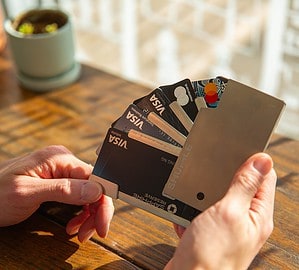There are two sides of every move: the excitement and wonder of something new and the stress and logistics that come with big change. Like many things in life, planning ahead of time can make the stress easier to manage. Creating checklists and booking services early can give such peace of mind. With a few strategies put in place, you can set yourself up for a successful move. It can make for a smooth transition into your new home.

1. Protect Yourself and Your Home
When you take ownership of your home, one of the first things you need to do is get home insurance. You want to protect yourself and one of the most expensive assets you’ll own. Don’t just take the first policy that you come across though. Do a little research and make sure the policy fits your home and the area you live in. Shop around and get a home insurance quote that works for you. You might not need hurricane insurance in Omaha, for example, but it might come in handy in Houston.
Another way to protect yourself is changing the locks for the house. It’s certainly exciting getting that set of keys from the new owner on signing day. But when the ink dries, spend a little bit of money on installing new locks throughout the house. This protects your family and belongings from keys that could be floating around. It might not even be a nefarious reason others have a key; they might simply not realize the previous owners have moved.
2. Create Checklists and Label Boxes
Creating a checklist for the move can be helpful to keep things on track. It’s easy to forget small things with so much on your mind. Make a list for logistics like turning off utilities at the old house and turning them on at the new place. Set up an internet install appointment. Update your addresses legally and with those who need to know.
Make a checklist for packing and decide how you will label boxes. High-level content descriptions and what room they go in makes moving day easier; especially if you have help or movers. A box label could look like: “Kitchen — plates/bowls/mugs BREAKABLE.” Put together an ‘essentials’ box or bag as well that has all your important paperwork in it for the move. A separate box that has towels, shampoo, soap, and a shower curtain can be great for that first night too.
3. Get Creative With Boxes
Saving up boxes ahead of time can be a great help. Buying every box you need for the move can get costly. You then have to deal with getting rid of them all after the move too. Luckily, you don’t have to pack everything in boxes. For your dresser or chest of drawers, take out the drawers and move the clothes in them as is. When you arrive, just slide them right in.
For hanging clothes, tear a small hole in the top of a trash bag and feed your hangers through. Tie the bottom of the bag. You can hang them right up in the new place and toss the bag. Moving other things in suitcases, laundry baskets, and trash cans means even fewer boxes. You may already have the perfect moving vessel; fill it up with what you need.
4. Book Trucks and Movers Early
Moving is stressful enough without a last minute scramble to book a truck. If you can hire professional movers, that can be a great help to you as well, but book early. If you don’t want to hire movers and are asking friends and family, still ask them early. It’s a big favor to ask and you want to ask for help with plenty of notice. And make sure you thank them if they say yes!
Try to plan your move at times that aren’t as busy for the area you’re moving. Try to avoid spring breaks and holiday weekends. These times might have more limited availability. Look for times when companies offer discounts as well. Moving on a Tuesday as opposed to a Saturday might save you big in the long run.
5. Clean Up and Childproof
Before you unpack, the house is a blank canvas. Get your deep clean in while everything is exposed. While you’re cleaning you can also start thinking about where you want all your things unpacked. Clean high first so dust comes down, and hit the floors last. Clean the bathrooms, kitchen, and wipe out all cabinets.
Walk through the space and decide where baby and pet proofing (if you have kids and pets) makes sense. Get those gates in place so you can rest easy knowing the kiddos and the dogs or cats are safe. If the backyard doesn’t have a fence, you could go ahead and put a lead out there. Then you can let your dog out while you unpack. Setting up the Pack ‘n Play for your little kids lets you set them down safely while you work too.
Doing some of the pre-planning upfront can really help you master the move. There are always some things out of your control with moves and big changes. But having the lights and water working when you arrive and knowing where your towels are packed are things you can control. And boy do they make a huge difference that first day.
Try to take charge of the things you can do early. These strategies can really help smooth things out and create a successful transition into your new home. And give yourself some grace and time. You don’t have to unpack every box your first night. Enjoy the process.



